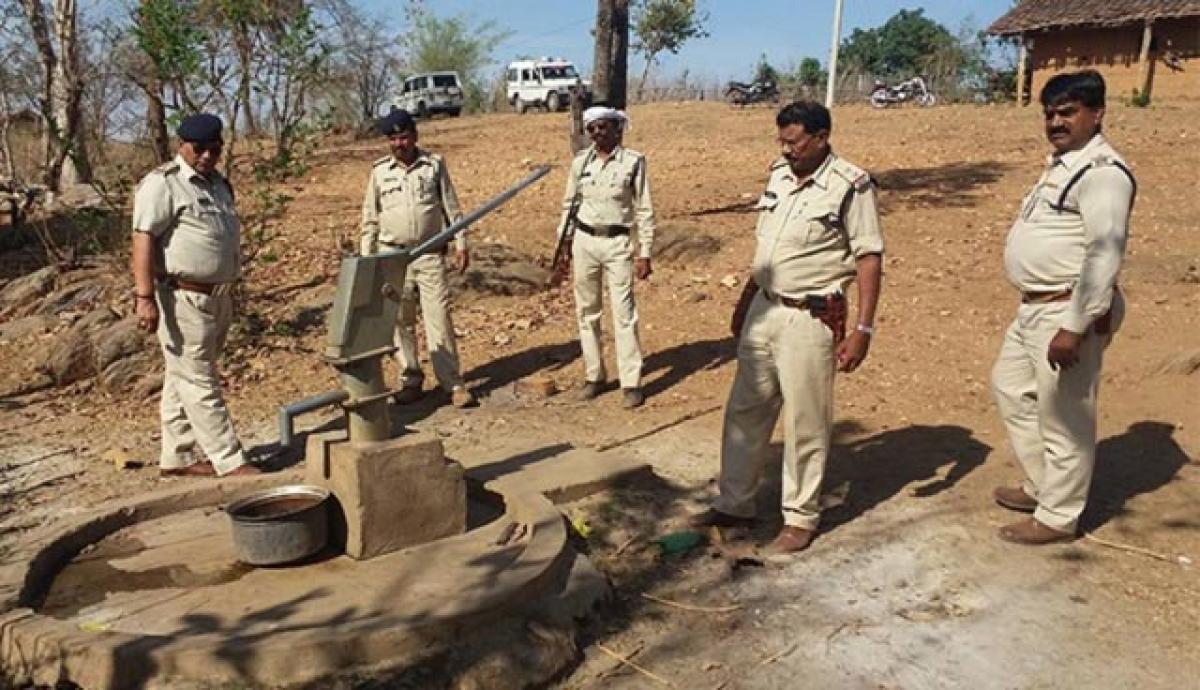Live
- A feast of music, dance and drama
- Mohan Babu denies absconding amid legal controversy
- Swift City to boost industrial growth in Bengaluru
- Allu Arjun walks out free after spending night in jail
- Congress harbours no grudge against any actor: TPCC chief
- Allu Arjun meets Upendra after release from prison, wishes for his ‘UI’ film
- Government Launches Uniform Diet Plan to Boost Student Health and Education
- Robust Security Arrangements for TSPSC Group-2 Exams in Jogulamba Gadwal
- National Lok Adalat Resolves 3387 Cases at Alampur Court
- ‘Get Set, Grow Summit 2024’ Focuses on Digital Detox for Families
Just In

Imrat Namdev and her younger sister Pushpa Namdev were neighbours in Chhatarpur district, in the drought-hit Indian region of Bundelkhand. Both relied on the same well for water and, according to police, frequently quarrelled over how much the other was using.
Parched central India battles for water
Bhopal : Imrat Namdev and her younger sister Pushpa Namdev were neighbours in Chhatarpur district, in the drought-hit Indian region of Bundelkhand. Both relied on the same well for water and, according to police, frequently quarrelled over how much the other was using.
In May, during one fight over water, Pushpa, 42, beat Imrat, 48, with a stick, police say. The injured sister was rushed to a hospital, but died there, and Pushpa was charged with murder.
"Our village faces a severe shortage of potable water," Imrat's son, Jitendra, told the Thomson Reuters Foundation. "Pushpa always felt my mother drew more water from the well."
As northern and central India continue to suffer thorough severe drought and oppressive heat, police in Bundelkhand and several other regions are reporting a rise in violent - and often deadly clashes over water.
After almost 10 years of below-average rainfall and several consecutive years of drought, the region's rivers, lakes, reservoirs and wells are drying up.
Disputes are a common problem in many places in India that face water shortages. But Indian police report that the fighting is getting more frequent and bloody.
In many parts of the country, neighbours, friends and family are turning on each other, desperate to protect what little water they have left, police records suggest.
Last month, in the tribal-dominated Alirajpur district of Madhya Pradesh, 13-year-old Surmada, her brother and her uncle used a neighbour's hand-pump, without permission, to get water for the family's houseguests.
According to police, the owner of the pump and his son attacked the group with arrows. One pierced Surmada's eye, killing her. And in the village of Kanker, in Shivpuri district, a large-scale argument broke out after two motorcyclists got into an accident, causing one to spill the 15-litre (4 gallon) container of water he was carrying.
"The two later called their family members and friends and attacked each other with spears, axes and sticks," said investigating officer Jaisingh Yadav of Sathanwada police station. Fifteen people were injured, five of them women, he said.
Lal Singh Arya, Madhya Pradesh's urban administration and development minister, said the government is using all its resources to try to make sure everyone has water. But he predicted tensions will remain high until monsoon rains - which began recently in some areas - take hold.
"There have been disputes over water in many parts of the state because of two consecutive droughts," he said. "The situation will improve with the monsoon rains."
Only drinking water Activists say the government's failure to act to better manage water is partly to blame for the rise in violence. "The present crisis is the fallout of over-consumption, wasteful use and inefficient water governance systems," said Ajay Dubey, an activist with the environmental non-governmental organisation Prayatna, based in Madhya Pradesh.
"People are going to any lengths for the sake of water. They've lost hope that the situation will ever improve. Things were never so bad," Dubey said. According to the Madhya Pradesh water resource department, out of the state's 139 main reservoirs, 82 are at only 10 percent capacity and 22 are empty. As authorities try to make the remaining water last until monsoon rains help refill the reservoirs, the measures they have implemented have only exacerbated the sense of desperation.
Across much of the region, authorities have banned the use of water for washing cars or trucks, bathing cattle or irrigating crops. In most cities in Madhya Pradesh, the local government only supplies drinking water on one out of every two to seven days.
The district administration of Sehore in Madhya Pradesh has temporarily taken charge of all water sources, whether government or privately owned, so that it can manage use of the dwindling resource. And in three towns in Madhya Pradesh, the use of water for anything other than drinking is banned.
Lokesh Kumar, sub-divisional magistrate of Ichhawar town, said water can't be used for farming or industrial purposes until July 5, when the monsoon is underway and authorities hope water sources will be replenished.
For many in rural India, the struggle to survive with very little water is proving too difficult. In areas like Bundelkhand, a growing number of people are leaving their homes and abandoning their work in hopes of finding water - even just a little more - somewhere else.
Asandi Das, who lives in a village in Chhatarpur district, plans to take his family to Agra, where the famous Taj Mahal is located, in the northern state of Uttar Pradesh. He said that right now his family has neither food nor water.
He knows it won't be easy even in Agra - or anywhere else - but hopes to get enough work to make ends meet. "We'll not be able to survive in our village," Das said. "There's just no water. We'll have to go to some other place if we want to live."
By Shuriah Niazi

© 2024 Hyderabad Media House Limited/The Hans India. All rights reserved. Powered by hocalwire.com







